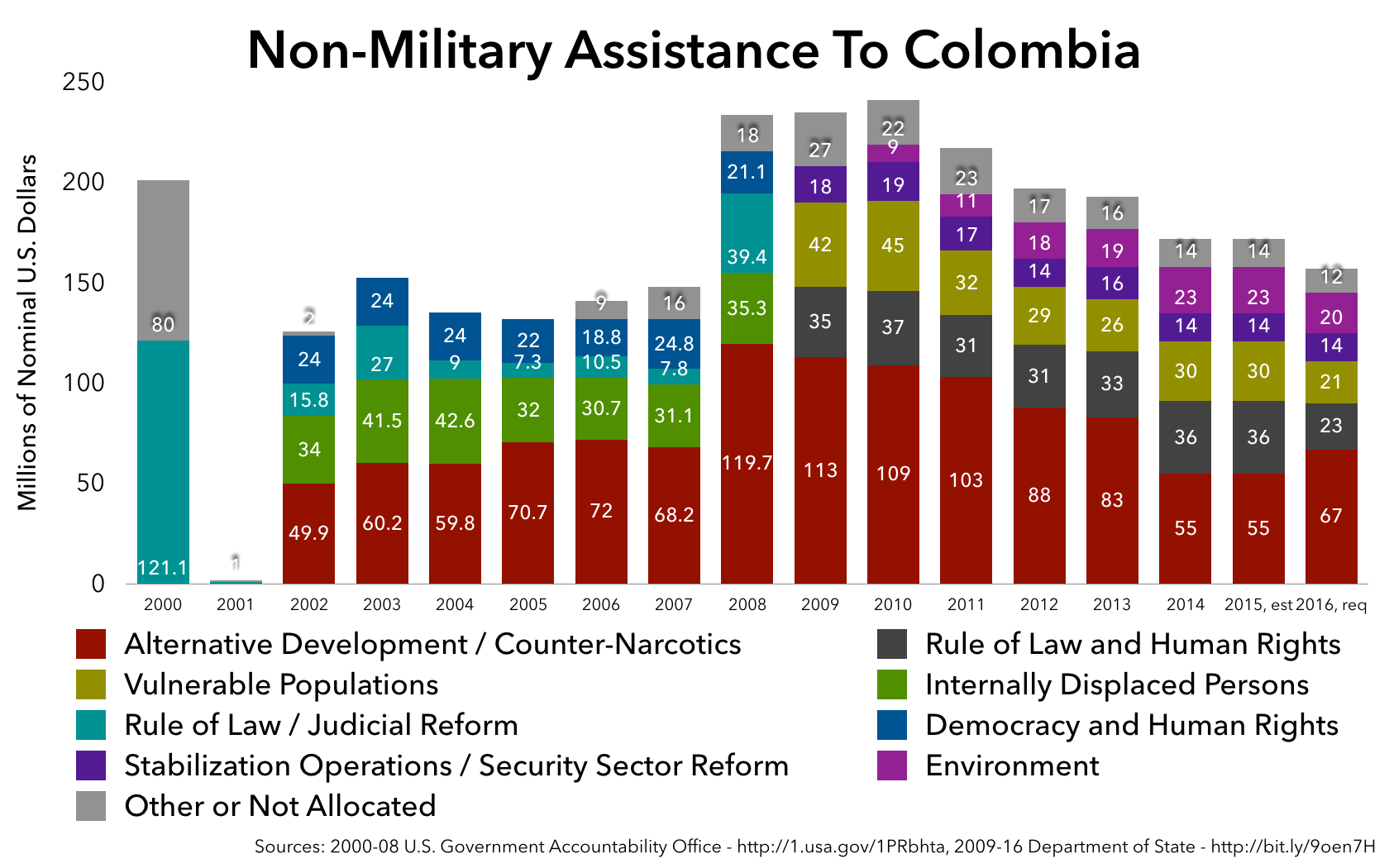The “Soft Side”
Non-military, non-police assistance to Colombia has totaled about US$2.88 billion, or US$169 million per year, between 2000 and 2016. Most has been delivered by the U.S. Agency for International Development and the U.S. Department of Justice. As the chart below indicates, economic aid jumped in 2008, the first year for which the Democratic-majority Congress elected in 2006 approved a budget.
Though category and program names have changed, this so-called “soft side” aid has mostly funded alternative development projects in illicit crop-producing areas; judicial reform; attention to displaced and other vulnerable populations, including a large investment in Afro-Colombian communities in recent years; human rights protection; support for victims and land restitution; and efforts to bring a civilian state presence into long-ungoverned territories. At times, USAID’s Office of Transition Initiatives, which carries out short-term, smaller, but more flexible and fast-moving projects, has maintained a presence in Colombia (as it has, again, since mid-2015).
(Text continues below the chart)

USAID’s efforts in the initial “Plan Colombia” years faced criticism for being thrown together in haste with little regard for sustainability: the agency, which had actually planned to exit Colombia in the late 1990s, suddenly found itself charged with developing complex programs in conflictive areas, under pressure to show that the U.S. strategy was not totally military. These early programs were rarely coordinated well with other U.S. and Colombian government strategies. Examples abounded of U.S.-supported projects left unprotected and subject to extortion by armed groups, or even fumigated with herbicides by the U.S.-backed eradication program.
Over the years, and especially after around 2008, U.S. non-military assistance programs grew in sophistication and scored some important successes in rural governance, judicial reform, human rights protection, and inter-agency coordination. Today, USAID is working off of a four-year country development strategy, developed in 2014, that puts much emphasis on increasing state presence in ungoverned territories, a key post-conflict priority.
 15
15